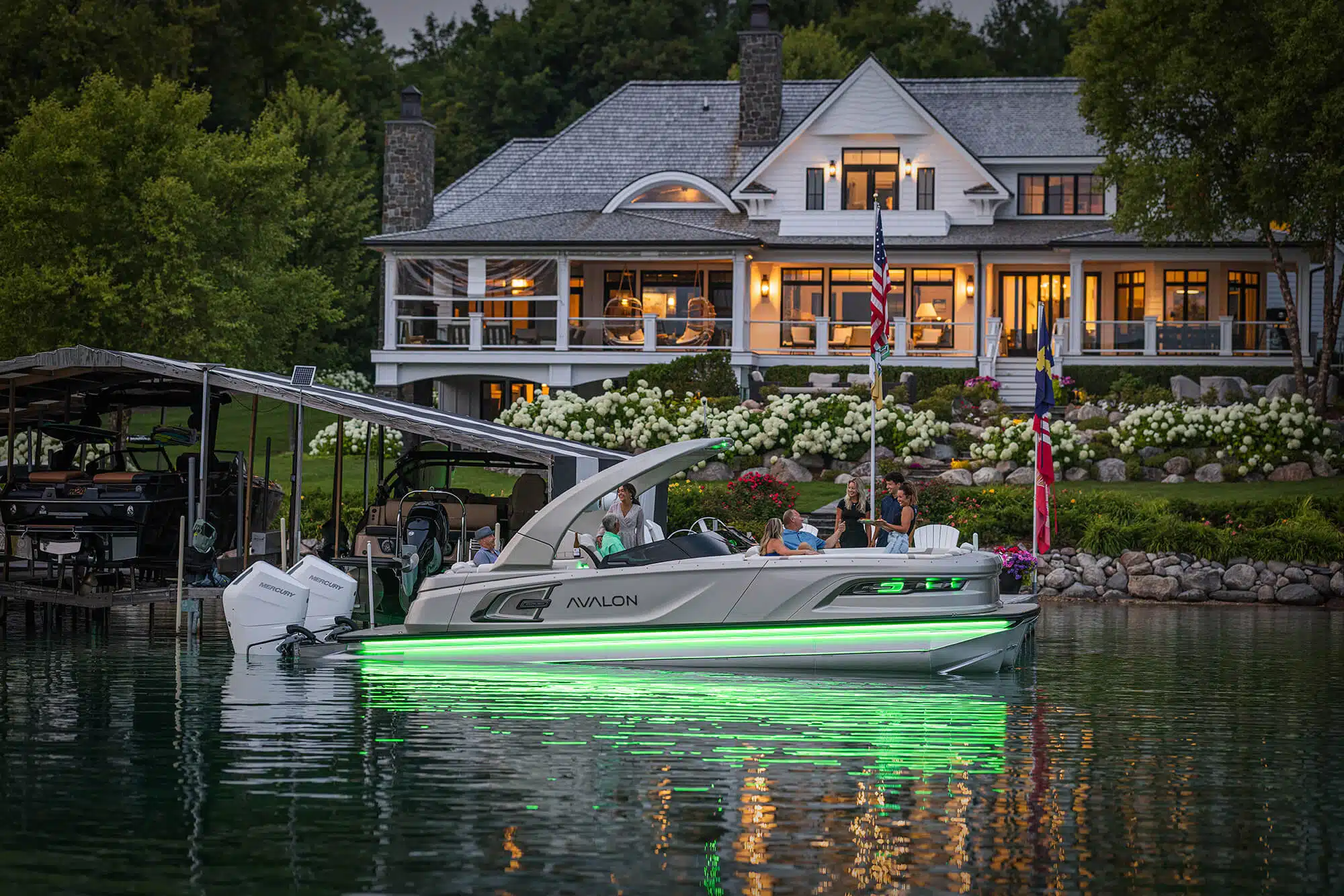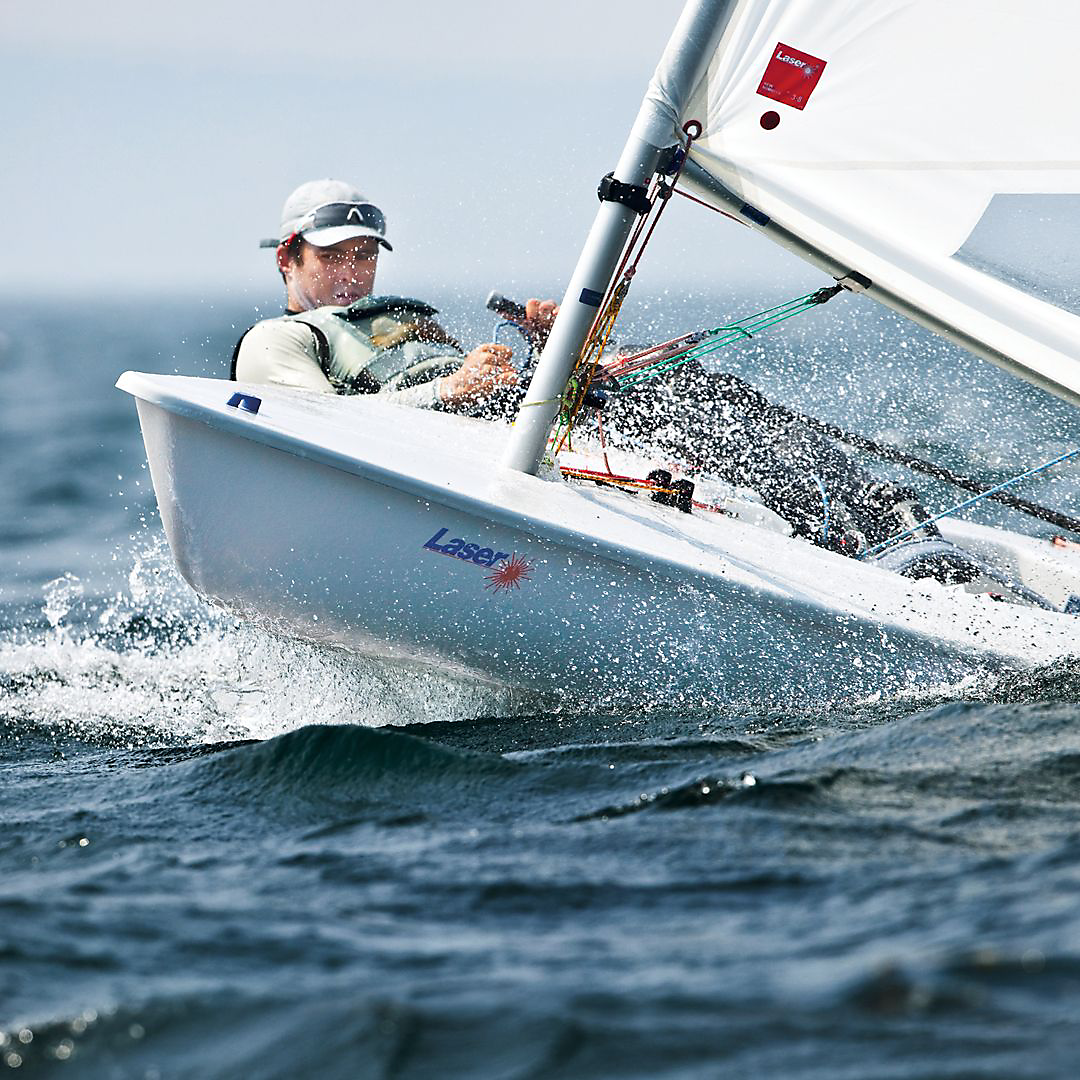Small Boats Ultimate Guide with Options: Navigate Your Perfect Choice
Small boats offer an affordable and enjoyable way to experience the water, whether it's for fishing, leisure, or watersports. With the wide variety of boats available, it's essential for potential buyers to understand the different options and features of small boats, so they can make informed decisions on the perfect boat for their needs. By exploring the types of materials, engines, and boat designs, individuals can find the ideal vessel that fits their budget and activities.

In addition to traditional materials like aluminum and fiberglass, modern small boats come in various forms – fishing boats, pontoons, runabouts, inflatables, and even personal watercraft and kayaks. Each boat type offers unique advantages and is tailored to specific activities or conditions. For example, fishing boats provide a stable platform for anglers, whereas kayaks and personal watercraft allow for individual exploration and easy maneuverability. Understanding the different boat sizes, materials, engine options, and features is crucial for a potential boat owner to make the best decision for their lifestyle.
Key Takeaways
- Small boats are available in various types and materials, catering to different water activities and preferences.
- Understanding boat sizes, materials, engines, and features is crucial to making an informed decision when purchasing a small boat.
- Buyers should consider their budget, intended usage, and personal needs when selecting the right boat for their lifestyle.

Small Boats Overview
Small boats are a popular choice for those looking to enjoy the water without the hassle and expense of larger vessels. They offer a more personal and intimate experience, allowing you to get closer to the water and explore areas that larger boats cannot access.
There are many types of small boats available, each with its own unique features and advantages. Some popular options include kayaks, canoes, rowboats, and inflatable boats. Kayaks are typically designed for one or two people and are ideal for navigating calmer waters. Canoes are often slightly larger and can accommodate more passengers and gear, making them suitable for family outings or fishing trips. Rowboats are versatile and can be used for leisurely rowing, fishing, or even as a tender for larger vessels. Inflatable boats provide a lightweight and portable option, making them easy to transport and store when not in use.
The choice of boat material can also vary depending on the intended use and budget. Common materials include wood, aluminum, and fiberglass. Wooden boats are often considered the most traditional option but can also be the most expensive. Aluminum boats provide a lightweight and durable option, while fiberglass boats are low maintenance and offer sleek, stylish designs.
When selecting a small boat, it is important to consider the following factors:
- Size and capacity: Small boats can range in size from compact single-person vessels to slightly larger options that can accommodate up to 6 passengers. Consider your intended use, such as solo adventures, family outings, or group excursions, when selecting the appropriate size and capacity.
- Portability and storage: Some small boats are easily transportable, such as inflatable boats, which can be deflated and packed neatly into the trunk of a car. Other options, like kayaks or rowboats, require specific transportation mechanisms like roof racks or trailers. Don't forget to consider storage requirements when the boat is not in use.
- Intended purpose: Some small boats are specifically designed for fishing, while others are better suited for leisurely cruising or exploring calmer waters. Make sure to select a boat that aligns with your intended activities on the water.
By taking these factors into account and exploring the various small boat options available, you can find the perfect vessel to meet your needs and enhance your aquatic adventures.

Aluminum and Fiberglass Boats
When selecting the right small boat, two popular materials are often considered: aluminum and fiberglass. Each material has its unique features, advantages, and disadvantages. In this section, we will discuss Aluminum Fishing Boats and Fiberglass Boats as the main options for small boats.
Aluminum Fishing Boats
Aluminum fishing boats are well-known for their durability, low maintenance, and light weight. They are usually designed with a flat bottom or v-shaped hull, making them versatile in both shallow and deep waters.
Some advantages of aluminum fishing boats include:
- Durability: Aluminum boats are resistant to rusting and corrosion, ensuring a long-lasting investment.
- Lightweight: Due to their lightweight nature, aluminum boats are easy to transport and require smaller engines, making them more fuel-efficient.
- Low Maintenance: Aluminum boats do not require frequent painting or polishing as fiberglass boats do, and they can withstand minor dents and scratches without compromising their performance.
However, there are a few drawbacks to aluminum boats:
- Limited Customization: They often come with fewer customization options compared to fiberglass boats and may have a more basic interior design.
- Noise: Aluminum boats tend to be noisier on the water, as they amplify sounds striking the hull, making stealthy fishing more challenging.

Fiberglass Boats
Fiberglass boats offer greater design flexibility, allowing for sleeker and more stylish boat designs. They are built using a mold that makes them more rigid and provides a smoother ride at high speeds.
Some advantages of fiberglass boats include:
- Design Flexibility: Fiberglass boats can be molded into various shapes and sizes, offering a wide range of design options.
- Smooth Ride: Fiberglass boats are typically heavier than aluminum boats, which allows them to cut through the water with ease, providing a smoother ride even in rough conditions.
However, fiberglass boats do have some disadvantages:
- Cost: Fiberglass boats are typically more expensive than aluminum boats due to their complex manufacturing process and the need for regular maintenance.
- Maintenance: Fiberglass boats often require more maintenance, such as regular waxing and buffing, to maintain their appearance and ensure proper functioning.
- Susceptibility to Damage: Unlike aluminum boats, fiberglass boats can crack or chip more easily, leading to costly repairs.
In general, both aluminum fishing boats and fiberglass boats provide solid options for small boat enthusiasts. Ultimately, the choice depends on factors such as personal preference, fishing needs, and budget constraints.

Fishing Boats
Fishing boats come in various sizes and designs to cater to the diverse preferences and requirements of anglers. In this guide, we will discuss Jon Boats, Bass Boats, Bay Boats, and All-Purpose Fishing Boats, shedding light on their unique features and usage.
Jon Boats
Jon boats are popular for their simplicity and affordability. They are typically small, lightweight, and made from aluminum, making them ideal for shallow water fishing. Anglers often rely on these boats for their easy maneuverability and low maintenance costs. Due to their flat-bottom design, Jon boats can accommodate essential fishing gear and usually include swivel seats for added comfort during long fishing expeditions. However, they may lack some advanced features like livewells and casting decks found in other fishing boat options.
Bass Boats
Bass boats are specifically designed for freshwater fishing targeting species like bass, crappie, and panfish. These boats are characterized by their sleek, low-profile design and are often equipped with powerful outboard engines. The key selling point of bass boats is the presence of spacious casting decks and ample storage for fishing gear. Anglers will also appreciate the inclusion of live wells for preserving their catch during tournaments.

Bay Boats
Designed for inshore saltwater fishing enthusiasts, bay boats provide a perfect blend of versatility and functionality. These boats typically have shallow draft hulls, allowing them to access various water depths with ease. Bay boats also come equipped with essential fishing features like rod holders, bait wells, and sometimes, T-tops for protection from the elements. Although not as specialized as bass boats, they offer a practical and comfortable platform for anglers exploring coastal waters and targeting a variety of species.
All-Purpose Fishing Boats
For those who want a versatile fishing vessel capable of handling different environments and fishing techniques, all-purpose fishing boats are an ideal choice. These boats usually have a deep-V hull design, which gives them stability and excellent handling in rough water. Although not as specialized as bass or bay boats, they still offer plenty of fishing-centric features like livewells, rod storage, and casting decks. All-purpose fishing boats cater to both freshwater and saltwater anglers, making them a popular choice for those seeking flexibility in their boating adventures.

Pontoon and Deck Boats
Pontoon Boats
Pontoon boats are versatile and popular options for those seeking a comfortable and stable ride on the water. These boats feature a large, flat deck supported by two or more pontoons, which provide buoyancy. Their design offers ample space for seating, storage, and entertainment, making them ideal for activities like fishing, watersports, and leisurely cruising.
Some key features of pontoon boats include:
- Spacious decks with various seating configurations
- Shallow draft, allowing access to shallow water areas
- Easy maneuverability and handling for new boaters
- Configurable options for entertainment, fishing, and other water activities
Pontoon boats are available in a variety of sizes and layouts, providing an option for nearly any budget or group size.
Deck Boats
Deck boats share some similarities with pontoon boats, such as the spacious deck and comfortable seating. However, deck boats usually have a fiberglass V-shaped hull, which enables them to handle rougher waters and reach higher speeds. This design makes deck boats suitable for faster-paced watersports, such as wakeboarding and water skiing.
Notable characteristics of deck boats include:
- V-shaped fiberglass hull for improved performance and handling
- Spacious seating and deck area for socializing
- Generally faster than pontoon boats, with higher top speeds
- Versatility for a variety of water-based activities and sports
Both pontoon and deck boats offer a range of options and features, resulting in a wide array of model choices, catering to specific boating needs and preferences. Ultimately, the best choice will depend on individual requirements and desired on-water experiences.

Runabouts and Bowriders
When considering small boats, two popular options are runabouts and bowriders. These boats are versatile, easy to handle, and suitable for a variety of recreational activities.
Runabout Boats
Runabout boats are small, versatile crafts generally ranging from 14 to 24 feet in length. They are typically powered by an outboard or stern drive engine and come in various styles, including open, cuddy, and deck boats. Runabouts are popular choices for day boating, water sports, and fishing due to their ease of use and maneuverability.
Key features of runabout boats include:
- Seating for up to 8 passengers, depending on the size
- Easy to tow and launch
- Often equipped with bimini tops for sun protection
- Storage compartments for gear
Some of the drawbacks of runabout boats:
- Limited in size and amenities compared to larger boats
- Smaller size may not be suitable for rougher waters or long-distance trips
Bowriders
Bowriders are a type of runabout boat with open seating in the bow section. This design allows for additional passenger space and offers a comfortable area to relax. Bowriders typically range from 16 to 28 feet in length and are popular for water sports, such as wakeboarding and water skiing, as well as leisurely boating and socializing.
Features that set bowriders apart include:
- Open bow seating for a more social experience
- Easy access to the water for swimming and water sports
- Sporty appearance and agile handling
However, there are some potential downsides to bowriders:
- Less protection from the elements compared to enclosed cabin boats
- May not be the best choice for extended cruising or overnight trips
In conclusion, both runabouts and bowriders are versatile small boats that cater to different boating needs and preferences. Choosing the right one depends on factors such as intended use, desired features, and budget.
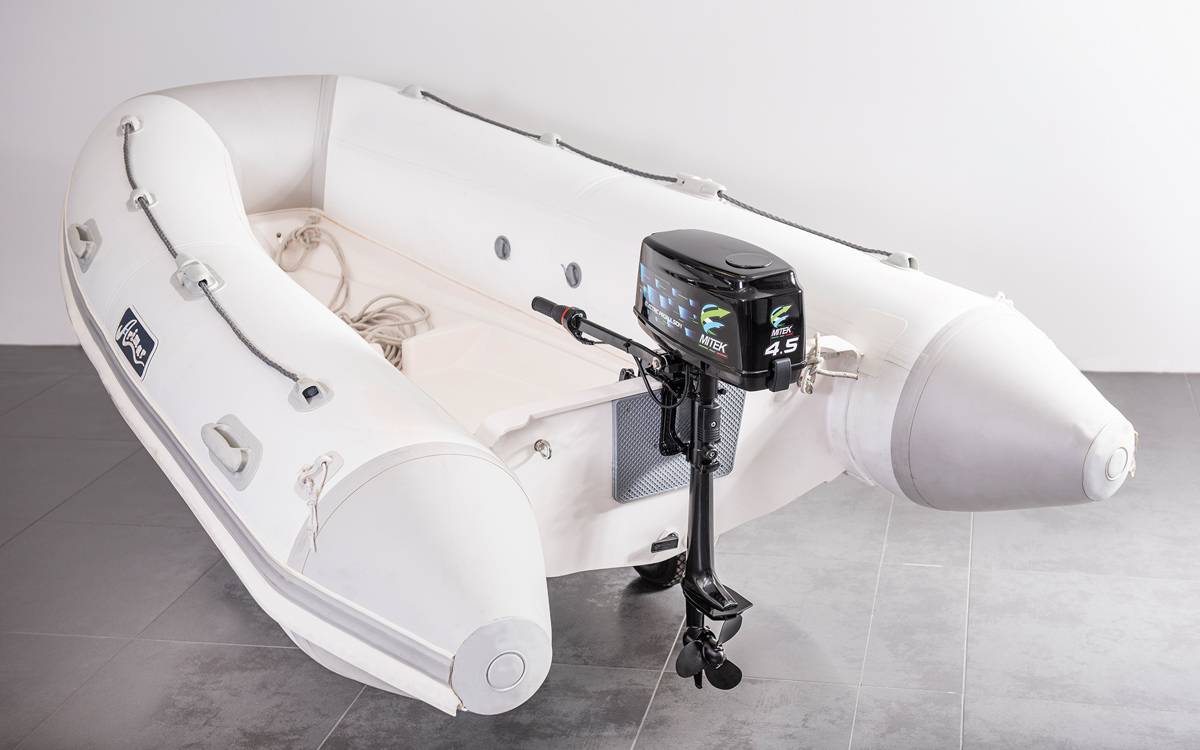
Inflatable Boats
Inflatable boats are a popular choice for those seeking a lightweight, portable, and versatile watercraft option. They are typically used for recreational activities, fishing, and as tender boats for larger vessels. Inflatable boats come in two main categories: Rigid Inflatable Boats (RIB) and Soft Inflatable Boats (SIB).
Rigid Inflatable Boats (RIB)
Rigid Inflatable Boats, also known as RIBs, are a hybrid between traditional hardshell boats and inflatable boats. They feature a solid hull, often made of fiberglass or aluminum, which provides stability, durability, and improved performance. RIBs also have inflatable collars or tubes made from PVC or Hypalon that contribute to their buoyancy and overall stability.
RIBs offer several advantages over other types of watercraft:
- Durability: The rigid hull of a RIB can withstand rough water conditions, making it suitable for various applications, such as rescue operations or military use.
- Stability: The inflatable collar provides better stability compared to solely inflatable boats, allowing for better control and handling.
- Speed: RIBs generally have better performance in terms of speed and maneuverability due to their rigid hull.
However, RIBs are often more expensive than their soft inflatable counterparts and can be challenging to transport, requiring more substantial equipment and storage space.
Soft Inflatable Boats (SIB)
Soft Inflatable Boats, also known as SIBs, are entirely made up of inflatable materials, typically PVC or Hypalon. They lack a rigid hull, which makes them more portable and easier to store when not in use. SIBs are often used for recreational purposes, such as fishing, cruising, or as tender boats for larger yachts.
There are several advantages to using a SIB:
- Portability: SIBs can be easily deflated, rolled up, and transported in a car trunk or stored in small spaces.
- Affordability: Soft inflatable boats are generally less expensive than RIBs, making them an accessible option for water enthusiasts on a budget.
- Ease of launching: Due to their lightweight nature, SIBs can be easily launched from various locations, even without boat ramps.
However, SIBs may not perform as well as RIBs in rough water conditions or at high speeds. They also require more careful handling, as punctures or leaks can happen more easily without a rigid hull.
Both Rigid Inflatable Boats (RIB) and Soft Inflatable Boats (SIB) offer unique advantages and characteristics, so it's essential to consider your specific needs and intended use when choosing an inflatable boat option.
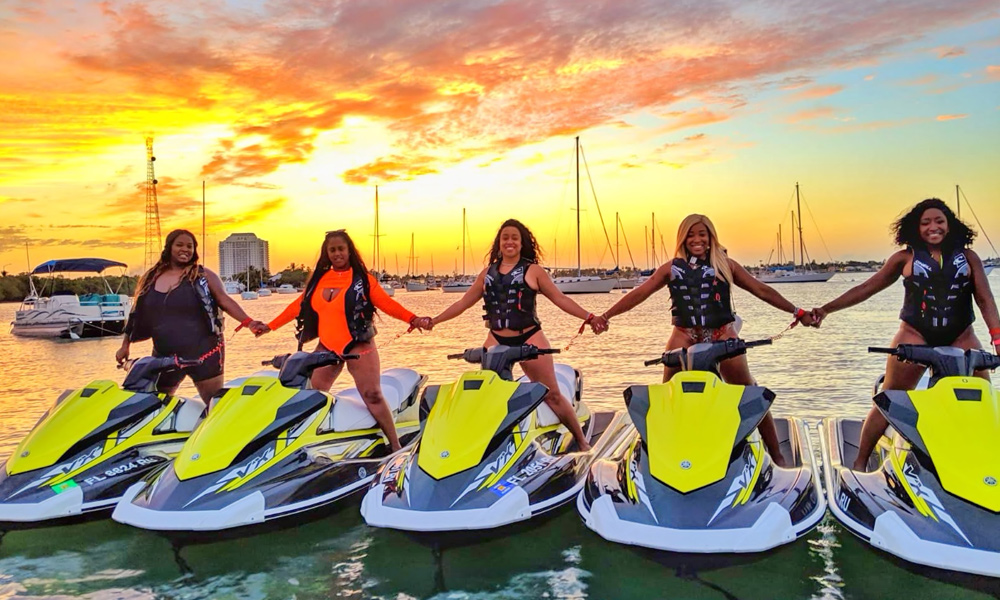
Personal Watercraft and Kayaks
Personal Watercraft (PWC)
Personal watercraft, or PWC, are small water vehicles designed for single or multiple riders. These are often used for recreational purposes and can reach high speeds on the water. There are various types of PWC available, including stand-up models like jet skis and sit-down models like Sea-Doo or Yamaha WaveRunners. These watercraft allow users to explore waterways with ease and perform various water-based activities like wakeboarding and tubing.
To choose the right PWC, consider factors such as your skill level, the intended purpose, and your budget. There are performance PWCs for experienced riders who seek thrilling speeds and advanced features, while recreational PWCs cater to beginners or families looking for a comfortable and easy-to-operate watercraft. Be sure to also take into account the required licensing and registration in your area.
Kayaks
Moving on to kayaks, these small boats are ideal for exploring calm or rapid waters and come in various types to suit different user needs. From whitewater kayaking to sea kayaking, there are specific kayak designs tailored to the environment and preferred style of paddling. For example, touring kayaks offer stability and storage capacity for multi-day trips, while playboats have a highly maneuverable design for skilled kayakers to perform tricks and stunts.
When choosing a kayak, consider your preferred paddling environment, experience, and intended use. You can find sit-on-top kayaks, which provide added stability and are easier to enter or exit, making them suitable for beginners or those with limited mobility. Alternatively, sit-inside kayaks offer better protection from the elements and have a lower center of gravity, which appeals to more experienced paddlers.
It's essential to understand the distinct features of both personal watercrafts and kayaks before making a decision. With the appropriate choice, either a PWC or kayak will enable you to explore the water and engage in exciting water-based activities safely and enjoyably.
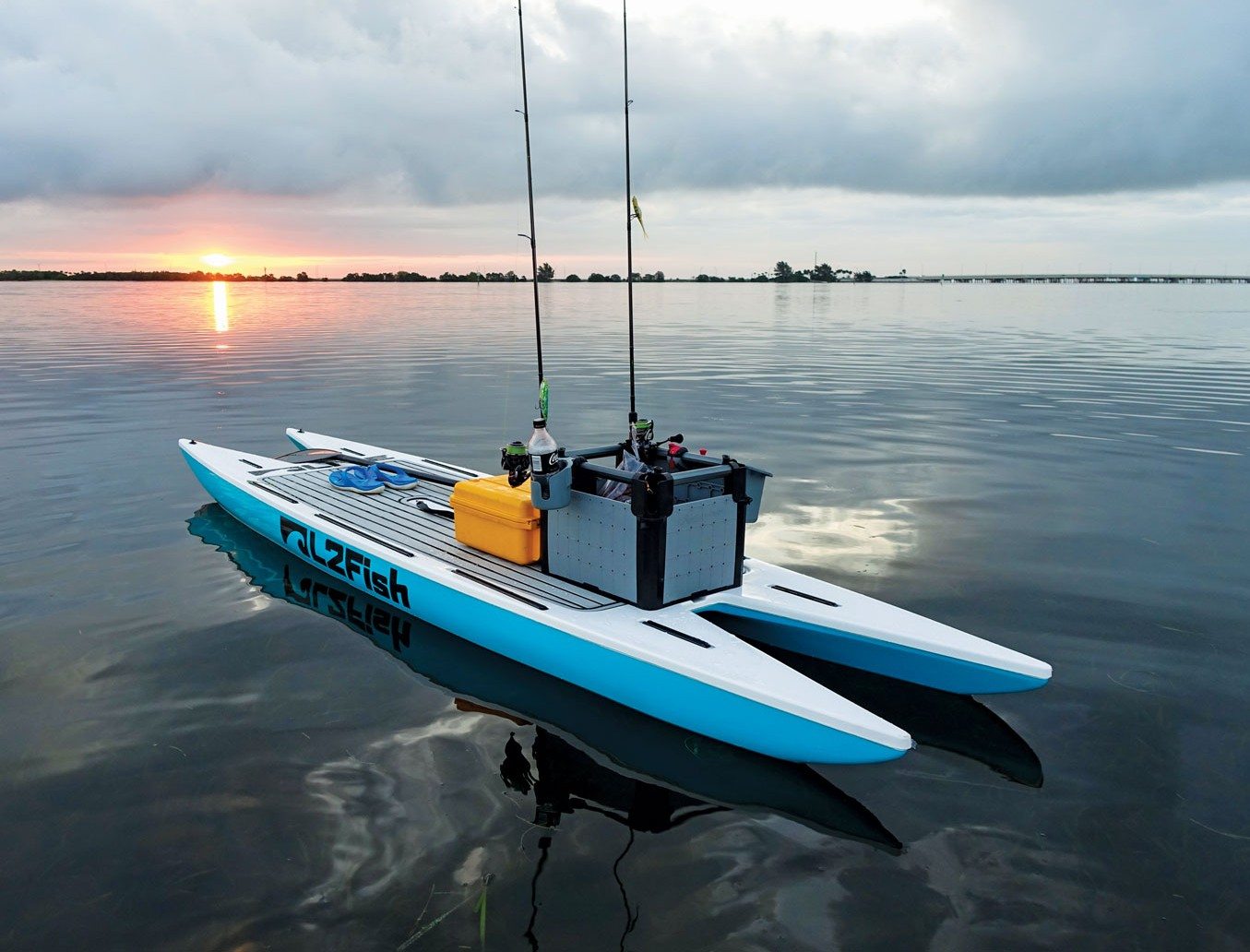
Specialty Boats
In this ultimate guide to small boats, we will discuss various specialty boats, which cater to specific activities or preferences. These boats include skiffs, center consoles, fish-and-ski boats, watersports boats, and flats boats. Each type presents unique advantages and features suitable for different purposes.
Skiffs
Skiffs are small, lightweight boats typically used for fishing and recreational activities in shallow waters. They are known for their simplicity and affordability. These boats are equipped with flat or near-flat hulls, which help them navigate shallower water with ease. Skiffs are often powered by small outboard engines, making them fuel-efficient and easy to maneuver. Their open design allows for flexible seating arrangements and ample storage space for fishing gear.
Center Consoles
Center console boats are versatile vessels, most commonly used for fishing, but also suitable for other activities like diving or cruising. As the name suggests, these boats have a center-mounted steering console, allowing for 360-degree access around the boat. Center consoles can range in size from 15 to 40 feet, offering different levels of amenities and performance. They typically have fish lockers, rod holders, live wells, and other fishing-oriented features. Outboard engines power most center console boats, providing reliable and efficient propulsion.
Fish-And-Ski Boats
Fish-and-ski boats are dual-purpose vessels that offer the best of both worlds: fishing and water sports. These boats are designed with features like adjustable seating, tow pylons, and swim platforms, making them suitable for skiing, wakeboarding, and other water sports. Simultaneously, fish-and-ski boats are equipped with fishing accessories like rod holders, live wells, and fish finders. This makes them an excellent choice for families who want to engage in various activities on the water.
Watersports Boats
Watersports boats are specifically designed for activities like wakeboarding, water skiing, and wakesurfing. These boats are characterized by their powerful engines, sleek design, and specialized equipment, such as wakeboard towers, ballast systems, and wake-shaping devices. Watersports boats come in various sizes, with inboard or stern drive propulsion systems. The high-performance features and stylish design of these boats make them popular among water sports enthusiasts.
Flats Boats
Flats boats are designed for shallow water fishing, particularly in coastal areas like the Florida Keys. These boats are lightweight and have a shallow draft, allowing them to glide over shallow waters with minimal disturbance. Flats boats typically have a flat or near-flat hull shape, making them highly maneuverable and stable while casting for fish. Essential features of flats boats include poling platforms, rod holders, and spacious casting decks, which cater to anglers targeting shallow water species such as bonefish and redfish.
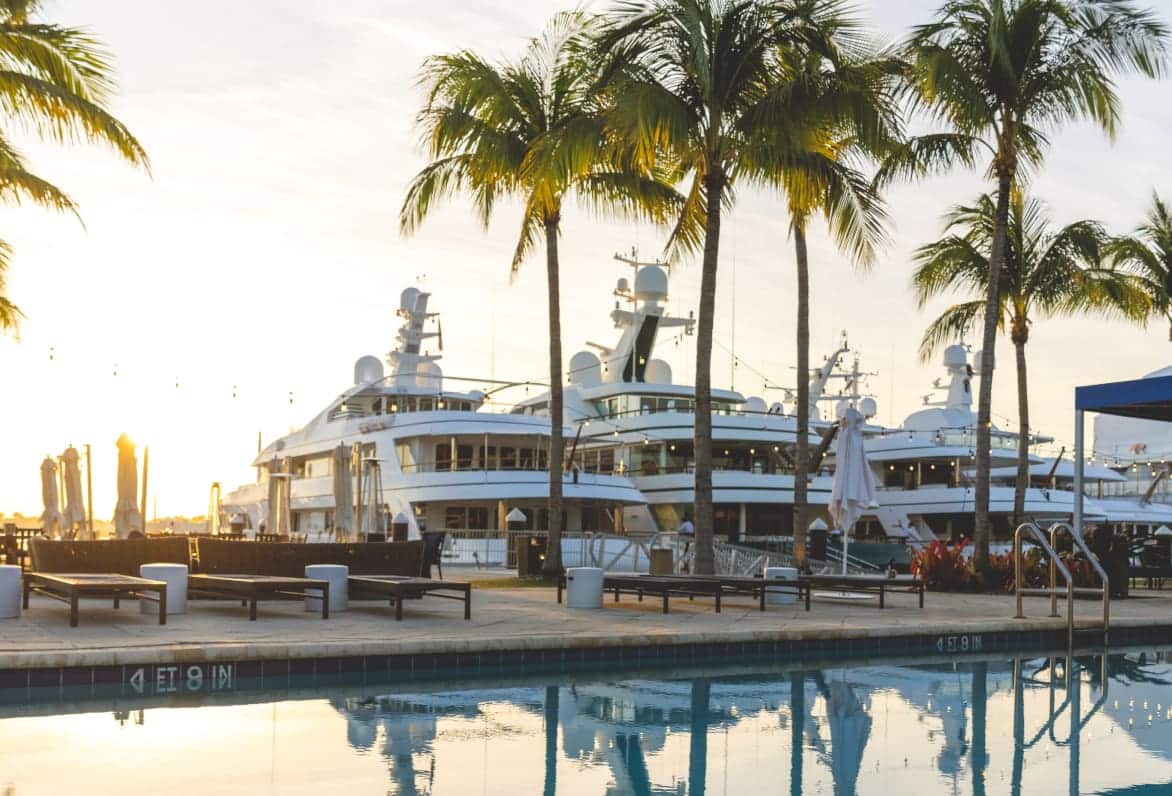
Boat Sizes and Features
Size and Passengers
When considering a small boat, it's essential to take into account the size and passenger capacity. Smaller boats typically range in length from 10 to 20 feet and can accommodate 2 to 6 passengers, depending on the specific design. This is an important aspect to consider based on your boating activities and the number of people you plan to bring along. Remember that a larger boat will provide more room for passengers and gear, but may be more challenging to handle for inexperienced boaters.
Weight and Transportation
Weight is another critical factor to consider when choosing a small boat. The boat's weight will determine its suitability for specific activities and ease of transportation. Lighter boats are more fuel-efficient and easier to transport via a trailer. Heavier boats, on the other hand, may provide more stability and are better suited for rough water conditions, but require a stronger vehicle for towing. Make sure to check your vehicle's towing capacity when choosing a boat, as overloading can lead to safety issues.
Storage and Accessories
Storage options and available accessories play a significant role in the overall functionality and versatility of a small boat. Some boats come with built-in storage compartments for fishing gear, life jackets, and other personal belongings. Additional features, such as rod holders, navigation lights, and fishfinders, can enhance the boat's utility for specific activities.
When purchasing a small boat, consider your specific needs and preferences in terms of size, passengers, weight, storage, and accessories. With various types and designs available, it's essential to select a boat that best suits your intended use and requirements.

Engine Options and Propulsion
When it comes to small boat propulsion options, there are several types of engines to consider. In this section, we will discuss outboard motors, sterndrive motors, and electric motors, and their unique features and advantages.
Outboard Motors
Outboard motors are the most common propulsion system for small boats, and are mounted on the boat's transom. They consist of a self-contained unit with an engine, gearbox, and propeller.
- Compact design: Outboard motors are smaller and lighter compared to other engine options, making them ideal for smaller boats with limited space.
- Maneuverability: Outboard motors offer better maneuverability with their ability to turn in tight spaces, thanks to their easy-to-handle steering system.
- Ease of maintenance: With their removable nature, outboard motors can be easily cleaned, serviced, and replaced when needed.
Sterndrive Motors
Sterndrive motors, also known as inboard/outboard (I/O) engines, are a combination of inboard and outboard motors. They are fitted inside the boat, with a drive unit extending to the stern, where the propeller is located.
- Power and performance: Sterndrive motors typically provide more power, allowing for higher speeds and better control over the boat. They can also handle rougher water conditions compared to outboard motors.
- Aesthetics and space: As sterndrive motors are fitted inside the boat, they offer a cleaner profile and usually more interior space for passengers and gear.
- Versatility: Sterndrive boats can accommodate different types of propellers and gear ratios, making them suitable for various water activities, such as waterskiing and wakeboarding.
Electric Motors
Electric motors are an environmentally-friendly alternative to traditional combustion engines. They offer quiet and clean operation, with no emissions or fuel consumption.
- Eco-friendly: Electric motors produce zero emissions and run without harmful fuel pollutants, making them suitable for environmentally-conscious boaters.
- Low noise: Electric motors operate more quietly compared to their combustion counterparts, providing a more peaceful boating experience.
- Reduced costs: While the initial investment for electric motors can be higher, they offer low operating and maintenance costs over time.
Each engine type has its own advantages and is suitable for specific boating needs and activities. It is important to carefully consider the available options and select the propulsion system that best meets your requirements for your small boat adventures.
Budget and Affordability
Affordable Small Boats
There are a variety of small boats available on the market that cater to different budgets and needs. Some popular affordable options include inflatables, kayaks, and small sailboats. Inflatables are versatile, portable, and budget-friendly. They can range from simple rafts to more advanced designs with rigid floors for added stability.
Kayaks are a popular option for those interested in solo or tandem boating and come in different types, such as sit-on-top, sit-inside, and fishing-specific kayaks. Prices for kayaks can range from affordable to high-end, depending on the materials and features.
Small sailboats like dinghies and catamarans offer an eco-friendly and cost-effective way to enjoy the water. They typically have less maintenance and operational costs compared to motorized boats.
- Inflatables: $100 - $2,000
- Kayaks: $200 - $2,500
- Small sailboats: $1,000 - $10,000
Cost of Ownership
The cost of owning a small boat can vary depending on factors such as maintenance, storage, and insurance. When considering affordability, it is vital to account for these ongoing expenses.
Maintenance: Regardless of the type of boat, regular maintenance is essential to keep the vessel in good shape. For inflatable boats, this might include patching air leaks or replacing worn parts. Kayaks and small sailboats may require occasional hull repairs or sail replacements. On average, annual maintenance costs can range from $100 to $1,000.
Storage: Storage fees depend on whether the boat is stored at home or in a professional facility. Home storage is generally more affordable, but space limitations may affect this option. Storing a boat at a marina or storage facility typically costs between $50 and $300 per month, depending on location and services provided.
Insurance: Boat insurance policies can vary in price depending on the boat's type, value, and usage. Insurance rates may range from $100 to $500 per year for small boats.
In conclusion, knowing your budget and considering the affordability of different small boat options is crucial when deciding on the right vessel for your recreational or professional needs. Remember to factor in the costs of maintenance, storage, and insurance when determining the overall cost of ownership.
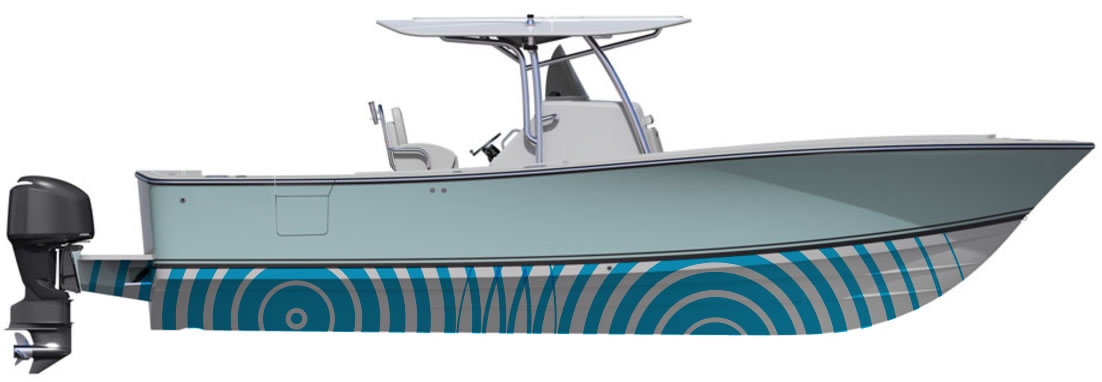
Boat Materials and Durability
When choosing a small boat, it's important to consider the materials used in its construction. The materials significantly affect the boat's durability, maintenance requirements, and overall performance. In this section, we will discuss two common options: wood and plywood boats, and aluminum boats, comparing welded and riveted construction.
Wood and Plywood Boats
Wood is a traditional boat-building material, known for its natural beauty, resilience, and ease of repair. Wooden boats can last for decades, if properly maintained. Some hardwoods, like teak or mahogany, offer exceptional durability and resistance to rot, but they can be more expensive. Softwoods, such as cedar or pine, are more affordable, but may require additional protection and maintenance1.
Plywood, a composite material made from layers of wood veneer, offers a lightweight and cost-effective alternative to solid wood. Modern marine-grade plywood is typically made using waterproof adhesive, which increases its resistance to moisture and rot. Additionally, plywood boats can be sheathed in fiberglass for added durability and reduced maintenance2.
It is worth noting that, while wood and plywood boats have aesthetic appeal and a traditional feel, they do require consistent maintenance, such as regular varnishing, painting, and inspections for rot or damage3.
Welded vs. Riveted Aluminum Boats
Aluminum boats are popular for their strength, durability, and low maintenance requirements. There are two main construction methods for aluminum boats: welding and riveting. Both options have their pros and cons.
Welded Aluminum Boats are built by permanently fusing the aluminum panels together, creating a strong and watertight bond4. This method offers several advantages:
- Increased overall strength and rigidity
- No need for additional sealing materials
- Reduced risk of leaks or loosening over time
However, welded aluminum boats can be more expensive, and repairs may require specialized equipment and skilled labor5.
Riveted Aluminum Boats are assembled using rivets, which allow for some flexibility in the hull, potentially increasing the boat's durability6. Riveted construction has its benefits:
- Lower initial cost
- Easier repairs, since rivets can be replaced individually
- Greater impact resistance due to the flexibility of the connections
On the flip side, riveted boats may be more prone to leaks and can require more frequent inspections and maintenance7. The choice between welded and riveted aluminum boats largely depends on the individual's budget, intended use, and maintenance preferences.
In conclusion, when choosing a small boat, carefully consider the materials and construction method to ensure the best combination of durability, performance, and ease of maintenance.
Footnotes
- https://www.boatdesign.net/threads/hardwood-vs-softwood.11571/ ↩
- https://www.westsystem.com/the-123-of-plywood/ ↩
- https://www.diynetwork.com/how-to/outdoors/boats/wooden-boats ↩
- https://boatinggeeks.com/welded-aluminum-boats/ ↩
- https://www.alumacraft.com/_assets/docs/Alumacraft_Riveting%20_vs_Welding_White_Paper.pdf ↩
- https://fishercrafts.com/welded-vs-riveted-aluminum-boats/ ↩
- https://www.westmarine.com/WestAdvisor/Aluminum-Boat-Construction-Welded-or-Riveted ↩

Boat Finder and Manufacturers
When searching for the perfect small boat, it's essential to consider various boat manufacturers and utilize boat finders. Boat finders are valuable tools that can help streamline the process of discovering suitable small boats based on your specific needs and preferences.
One reputable boat manufacturer for small boats is Boston Whaler. They offer a wide range of high-quality small boats, designed for fishing, cruising, and watersports. Their boats are known for durability, performance, and exceptional craftsmanship.
Another excellent manufacturer is Tracker Boats. Their focus is on creating aluminum fishing boats designed for avid anglers. The company offers a range of sizes and styles, ensuring that whether you want a simple fishing boat or a more sophisticated vessel, you can find what you need.
When it comes to utilizing a boat finder, websites like Boat Trader offer customizable search parameters such as boat type, manufacturer, size, and price, allowing you to find the best small boat options that cater to your preferences. Additionally, YachtWorld offers a comprehensive platform for finding new and used boats from a variety of manufacturers worldwide.
Choosing the ideal small boat ultimately comes down to your personal needs and preferences. It is crucial to research various manufacturers and make use of boat finders to ensure you find a vessel that caters to your specific requirements.

Frequently Asked Questions
What are the best small boats for fishing?
There are various types of small boats that are ideal for fishing, depending on your preferences and needs. Some popular options include bass boats, aluminum boats, and inflatable boats. Bass boats are designed specifically for fishing in shallow waters and feature a small platform for casting. Aluminum boats are lightweight, durable, and versatile, making them suitable for a variety of fishing environments. Inflatable boats offer portability and easy storage, which is great for people with limited space.
How much do small boats with motors typically cost?
Prices for small boats with motors can vary widely, depending on their size, materials, features, and brand. You can find budget-friendly options starting at around $1,000 for simple, small boats with basic motors. On the other hand, more advanced and high-quality boats can cost anywhere from $5,000 to over $30,000.

What are some popular small boat names?
Choosing a name for your small boat is a personal decision, but some popular names include Serenity, Escape, Odyssey, and Seas the Day. Boat names often reflect the owner's personality, hobbies, or favorite places, so feel free to get creative and choose a name that holds meaning for you.
What are the options for small boats with cabins?
Small boats with cabins typically range between 20 to 30 feet in length. There are a variety of options, such as cuddy cabins, walkarounds, and weekender boats. Cuddy cabins are compact and provide a small sheltered space for sleeping or storage. Walkarounds have a small sheltered cabin, but also allow easy access to the open deck areas for fishing and other water activities. Weekender boats offer a little more space and comfort, designed for short trips and overnight stays.
What's the most versatile single-person boat with motor?
A versatile single-person boat with a motor would ideally be lightweight, portable, and easy to maneuver. Options such as inflatable boats, kayaks with trolling motors, and small aluminum boats with outboard motors are worth considering. Each option offers different benefits, so choose based on your specific needs and preferences, keeping in mind factors like your budget and storage space availability.
What are the smallest boats suitable for offshore use?
While smaller boats are generally not recommended for offshore use due to safety concerns, some options are better suited for limited offshore use than others. Boats with a deep-V hull design and a length between 20 to 30 feet, such as center consoles and walkarounds, can handle offshore conditions better than flat-bottomed boats. However, it's important to keep in mind that weather and sea conditions play a critical role in offshore safety, and even larger boats can face difficulties in severe conditions.
Charlie is Editor-in-Chief of Sea Magazine

